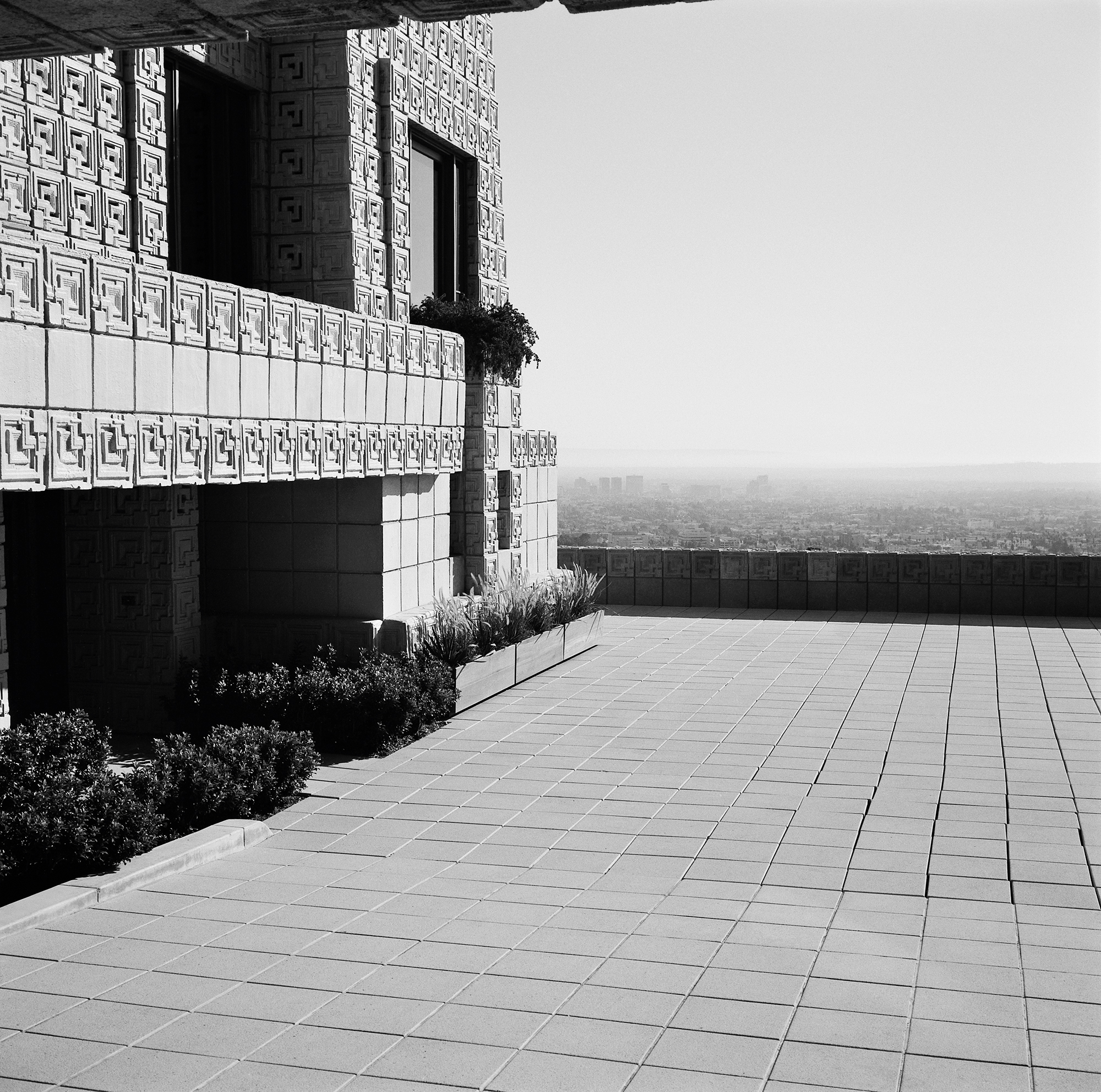Purple Magazine
— S/S 2017 issue 27
Frank Lloyd Wright in Los Angeles
photography by OLIVIER ZAHM
text by FRANCOIS PERRIN
All Frank Lloyd Wright houses copyright ADAGP, Paris, 2017
 Ennis House, 1924
Ennis House, 1924
When Frank Lloyd Wright, the great American architect, was first asked to build in Los Angeles in 1917, he suddenly faced a new landscape and climate that would lead him to create a radically new body of work known as the textile block series. Wright began his career in Chicago, where he developed his signature Prairie style: houses connecting to the landscape through their open plans, decorative elements, and furniture inspired by the local vegetation. His time in Los Angeles fell during a shift in his practice. The ’20s were difficult for him, as he was in between major commissions. He was working for a time on Tokyo’s Imperial Hotel (which no longer exists) and could not closely supervise the projects in California. His son Lloyd…
-

Hollyhock House, 1917-1921
-

Hollyhock House, 1917-1921
-

Millard House, 1923 The Millard
-

Millard House, 1923 The Millard